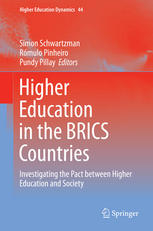

Most ebook files are in PDF format, so you can easily read them using various software such as Foxit Reader or directly on the Google Chrome browser.
Some ebook files are released by publishers in other formats such as .awz, .mobi, .epub, .fb2, etc. You may need to install specific software to read these formats on mobile/PC, such as Calibre.
Please read the tutorial at this link: https://ebookbell.com/faq
We offer FREE conversion to the popular formats you request; however, this may take some time. Therefore, right after payment, please email us, and we will try to provide the service as quickly as possible.
For some exceptional file formats or broken links (if any), please refrain from opening any disputes. Instead, email us first, and we will try to assist within a maximum of 6 hours.
EbookBell Team

4.1
50 reviewsIn spite of the increasing attention attributed to the rise in prominence of the BRICS (Brazil, Russia, India, China and South Africa) countries, few studies have looked at the ways in which broader social expectations with respect to the role of higher education across the BRICS have changed, or not, in recent years. Our point of departure is that, contrary to the conventional wisdom focusing on functionalistic perspectives, higher education systems are not just designed by governments to fulfill certain functions, but have a tendency for evolving in a rather unpredictable fashion as a result of the complex interplay between a number of internal and external factors. In reality, national higher education systems develop and change according to a complex process that encompasses the expectations of governmental agencies, markets, the aspirations of the population for the benefits of education, the specific institutional traditions and cultures of higher education institutions, and, increasingly so, the interests and strategies of the private firms entering and offering services in the higher education market. This basically means that it is of outmost importance to move away from conceiving of "universities" or "higher education" as single, monolithic actors or sector. One way of doing this is by investigating a selected number of distinct, but nonetheless interrelated factors or drivers, which, taken together, help determine the nature and scope of the social compact between higher education (its core actors and institutions) and society at large (government, industry, local communities, professional associations).